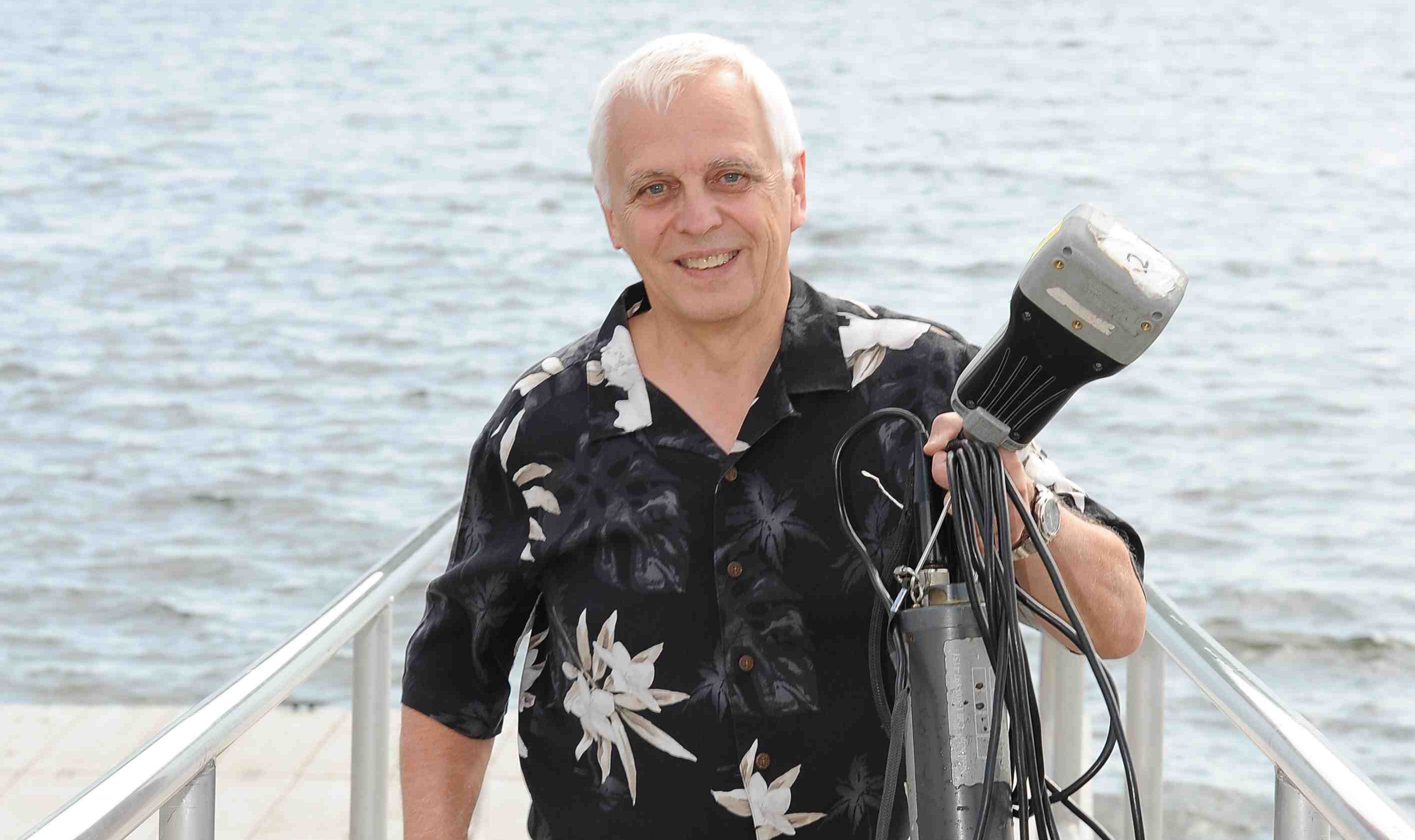
Restoration Produces Ripple Effect At Clear Lake
Clear Lake is getting closer to living up to its name after a restoration plan created by limnologist John Downing and his Iowa State team.
It began with a two-year study he compares with a medical diagnosis.
“We basically took that lake and the watershed apart and determined what wasn’t working right and then helped the community find a way to put it back in better shape,” says Downing, a professor of ecology, evolution and organismal biology and agricultural and biosystems engineering.
He credits the City of Clear Lake, Cerro Gordo County, the Iowa Department of Natural Resources and dozens of citizen volunteers with making the restoration successful.
“It’s a community that really threw a lot of energy into it, worked hard and did many special things to increase the chances of success,” Downing says.
The lake became a classroom for many of Downing’s students.
One became the coordinator of the Clear Lake Enhancement and Restoration (CLEAR) Project. David Knoll (’99 animal ecology) worked for Downing as an undergraduate. He collected samples at the lake, analyzed them and performed GIS work during the diagnostic and feasibility study preceding the restoration.
The work convinced him to pursue a career in water resources. In 2001, he joined the Iowa Department of Agriculture and Land Stewardship as an environmental specialist with responsibility for the CLEAR Project.
Although much progress has been made, Knoll says, the community around Clear Lake is still working on implementing the recommendations of the feasibility study.
“The fact that this is a relatively small watershed (about 8,500 acres) makes it easier, but it takes a lot of maintenance work and requires consistent attention,” Knoll says.
The lake’s recovery has been “phenomenal,” much better than expected. “The water clarity is substantially improved, the function of the lake is much, much better,” Downing says.
One of the concerns when they started the restoration was heavy nutrient and sediment loading from agricultural and developed areas in the lake’s watershed. Row-crop agricultural land represents 51 percent of the land in the watershed, and about 80 percent of the lake shoreline is developed. This meant that a lot of improvements needed to be made in the land around the lake to cut down on nutrient run-off.
Phosphorus coming into the lake was the main problem and is now down to a quarter of pre-restoration levels. Likewise, suspended sediment in the lake has been reduced by more than 80%.
The Department of Natural Resources is managing the carp, which stir up the bottom when nutrients are rich and outcompete other fish. Restoring surrounding wetlands and Ventura Marsh was another factor, and dredging the small lake west of Clear Lake helped protect it from sediment and nutrient deposition.
Downing said Clear Lake became a model for about a dozen lake restoration projects. “We, as a state, learned a lot—how to do the studies and how to do the restoration—from the work at Clear Lake,” Downing says. “We also learned a lot about the value of water, which was very important.”
He collaborated with Iowa State economists Catherine Kling and Joseph Herriges from 1999-2005 on surveys of Iowans seeking to understand the return of investments in Clear Lake and other waterways. Water clarity was a prime factor in how Iowans decide to visit lakes and clean lakes were called extremely valuable to the 80 percent of Iowans who visit lakes each year.
The Lakes Valuation project found that 12 of Iowa’s 132 lakes generate spending of more than $40 million annually. Overall, Iowans spent more than $9 million on average per lake.
Lake visitation increased 33 percent from 2002–2009, the years in which lake usage surveys were conducted. Of the four lakes with the largest increase in usage, three had undergone major restoration efforts.
“I grew up around water and studied to be a limnologist,” says Downing, an Iowa native. “It’s a great thrill for me to give something back to society.”



